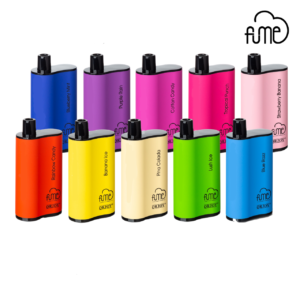Understanding E-Cigarettes
Before delving into their effects, it’s important to understand what e-cigarettes are and how they function. E-cigarettes are electronic devices that heat a liquid solution containing nicotine, flavorings, and other chemicals to create an aerosol that users inhale. Unlike traditional cigarettes, which burn tobacco to produce smoke, e-cigarettes operate through vaporization, often referred to as “vaping.”
Sensory Perception and Smoking
Smoking cigarettes can profoundly affect sensory perception. Long-term smoking can diminish the sense of taste and smell, leading to a reduced ability to enjoy flavors and aromas fully. The chemicals in tobacco smoke can damage the taste buds and olfactory receptors, dulling the senses over time.
Impact on Taste Perception
E-cigarettes come in a variety of flavors, ranging from fruity to dessert-like options. While these flavors aim to mimic popular tastes, their impact on taste perception is still not fully understood. Some research suggests that the chemicals present in e-cigarette aerosols may affect taste receptors, altering the way users perceive flavors. Additionally, the presence of nicotine, which is common in e-cigarettes, can also influence taste perception, potentially desensitizing taste buds over time.
Influence on Smell
The sense of smell plays a crucial role in how we experience flavors and aromas. Similar to taste perception, smoking traditional cigarettes can impair the sense of smell due to the damage caused by toxic chemicals. While e-cigarettes produce vapor rather than smoke, the chemicals present in e-cigarette aerosols may still impact olfactory receptors, affecting the ability to detect and appreciate scents fully.
Overall Sensory Experience
Beyond taste and smell, the sensory experience of smoking—whether traditional cigarettes or e-cigarettes—involves factors such as tactile sensation and visual cues. E-cigarettes often mimic the physical act of smoking, providing users with a similar hand-to-mouth motion and the sensation of inhaling vapor. The visual aspect of exhaling vapor clouds may also contribute to the sensory experience, creating a sensation akin to traditional smoking.
Conclusion
The potential effects of e-cigarettes on smokers’ sensory perception are a topic of ongoing research and debate. While e-cigarettes offer an alternative to traditional smoking and may pose fewer health risks in some respects, their impact on sensory perception warrants further investigation. As the popularity of e-cigarettes continues to rise, understanding their effects on taste, smell, and overall sensory experience is essential for making informed decisions about their use.
In conclusion, while e-cigarettes may offer certain advantages over traditional smoking, their potential effects on sensory perception underscore the need for continued research and awareness surrounding these devices. As our understanding evolves, it’s crucial to prioritize public health and safety in addressing the complex issues surrounding e-cigarette use.



